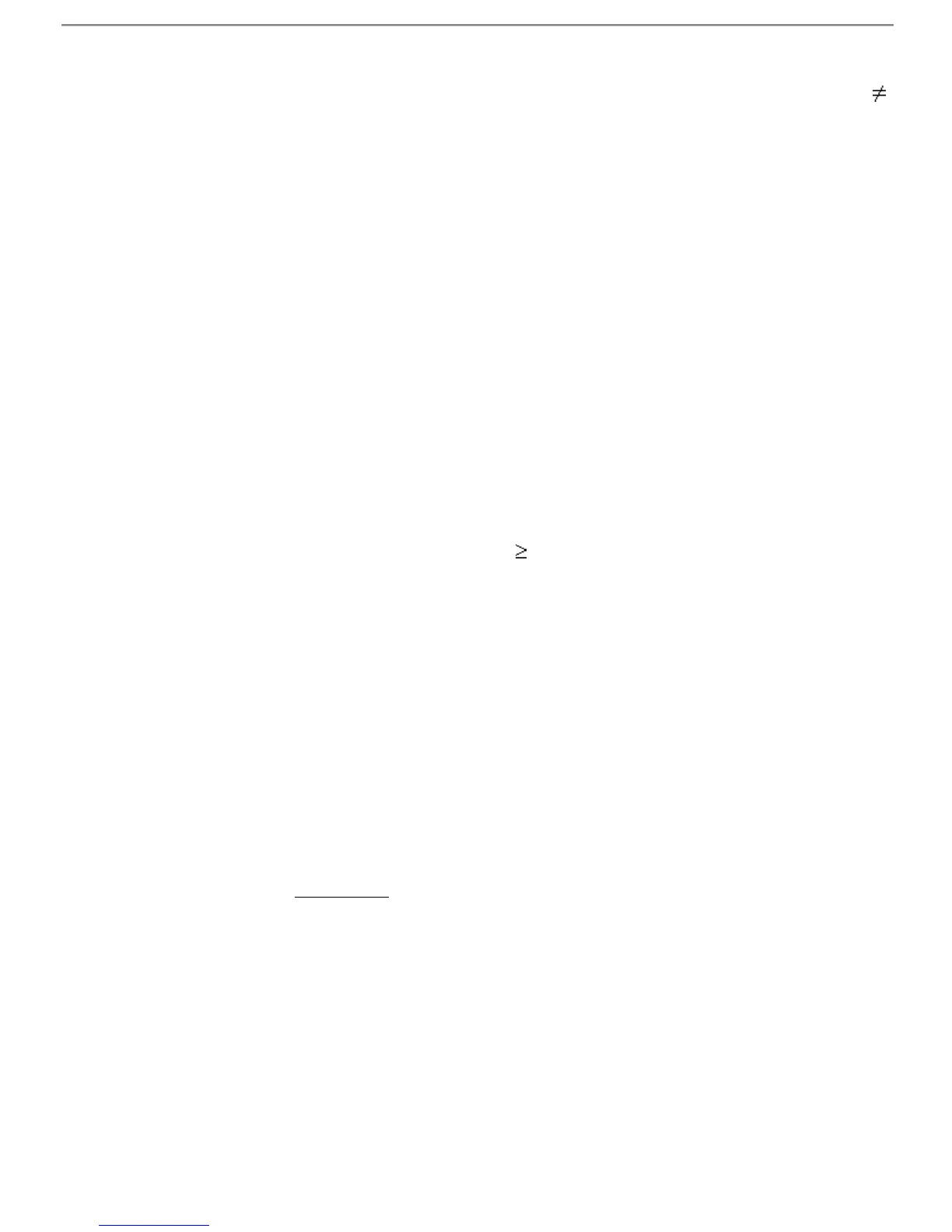CLEAR
Deletes all variables, freeing the space they occupied.
CLS
(Clear Screen) Clears the display file. See chapter 27 concerning the display file.
CONT
Suppose p/q was the last report with a non-zero. Then
CONT
has the effect
GOTO
q if p
9,
GOTO
q+1 if p = 9 (
STOP
statement)
COPY
Sends a copy of the display to the printer, if attached; otherwise does nothing.
Unlike all other commands, a
COPY
command does not clear the screen first. There must
be no spaces before
COPY
.
Report D if
BREAK
pressed.
DIM
α
(n
1
,...,n
k
)
Deletes any array with the name α, & sets up an array α of numbers with k dimensions
n
1
,...,n
k
. Initializes all the values to 0.
Error 4 occurs if there is no room to fit the array in. An array is undefined until it is
dimensioned in a
DIM
statement.
DIM
α$(n
1
,...,n
k
)
Deletes any array or string with the name α$, & sets up an array α$ of characters with k
dimensions n
1
,...,n
k
. Initializes all the values to "". This can be considered as an array of
strings of fixed length n
k
, with k-1 dimensions n
1
,...,n
k-1
.
Error 4 occurs if there is no room to fit the array in. An array is undefined until it is
dimensioned in a
DIM
statement.
FAST
Starts fast mode, in which the display file is displayed only at the end of the program, while
INPUT
data is being typed in, or during a pause.
FOR
α=x
TO
y
FOR
α=x
TO
y
STEP
1
FOR
α=x
TO
y
STEP
z
Deletes any simple variable α, & sets up a control variable with value x, limit y, step z, &
looping address 1 more than the line number of the
FOR
statement (-1 if it is a command).
Checks if the initial value is greater (if step 0) or less (if step < 0) than the limit, & if so
then skips to statement
NEXT
α at the beginning of a line.
See
NEXT
α.
Error 4 occurs if there is no room for the control variable.
GOSUB
n Pushes the line number of the
GOSUB
statement onto a stack; then as
GOTO
n
Error 4 can occur if there are not enough
RETURN
s.
GOTO
n Jumps to line n (or, if there is none, the first line after that).
IF
x
THEN
s If x is true (non-zero) then s is executed. The form '
IF
x
THEN
line number' is not allowed.
INPUT
v Stops (with no special prompt) & waits for the user to type in an expression; the value of
this is assigned to v. In fast mode, the display file is displayed.
INPUT
cannot be used as a
command; error 8 occurs if you try.
If the first character in the
INPUT
line is
STOP
, the program stops with report D.
LET
v=e Assigns the value of e to the variable v.
LET
cannot be omitted.
A simple variable is undefined until it is assigned to in a
LET
or
INPUT
statement.
If v is a subscripted string variable, or a sliced string variable (substring), then the
assignment is Procrustean: the string value of e is either truncated or filled out with spaces
on the right, to make it the same length as the variable v.
LIST LIST
0
LIST
n Lists the program to the television, starting at line n, & makes n the current line.
Error 4 or 5 if the listing is too long to fit on the screen;
CONT
will do exactly the same
again.
LLIST LLIST
0
LLIST
nLike
LIST
, but using the printer instead of the television.
Should do nothing if the printer is not attached.
Stops with report D if
BREAK
pressed.
LOAD
f Looks for a program called f on tape, & loads it & its variables.
If f = "", then loads the first program available.
If
BREAK
is pressed or a tape error is detected, then
(i) if no program has yet been read from tape, stops with report D & old program;
(ii) if part of a program has been read in, then executes
NEW
.
